
Marcus Hanke
[PuristSPro Moderator]
11519

Baselworld 2013: the Breguet report
Breguet at Baselworld 2013
presented by Marcus Hanke
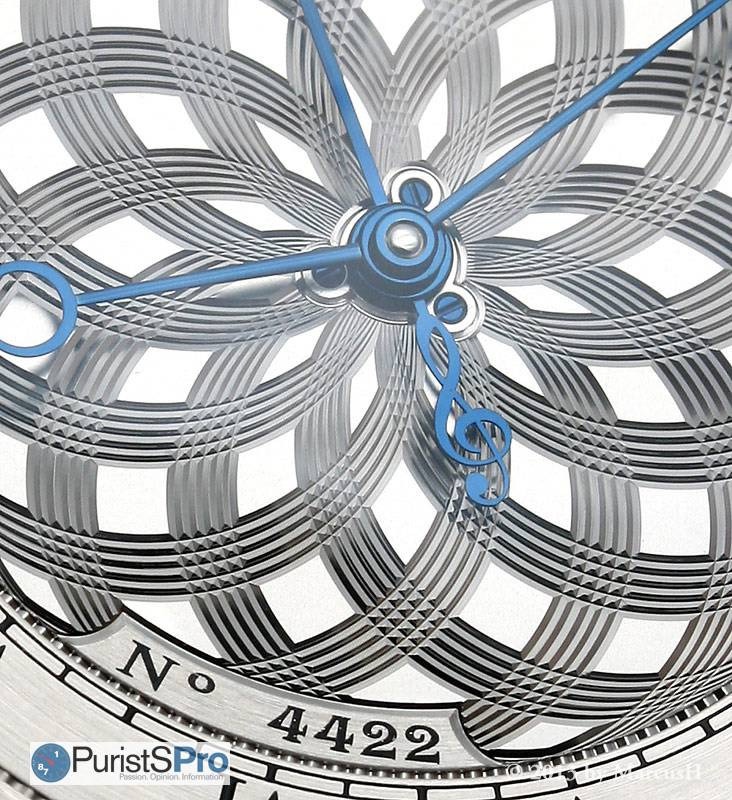
presented by Marcus Hanke

For me, Breguet was always not simply a mere watch production, but much more watchmaking with a magical touch. This year, I could feel this touch very clearly.
Although having been presented last year already, the Classique Chronométrie 7727 is still a novelty worth to be reported about, since it is now readily available in its final production shape. In my eyes, this watch represents perfectly the Breguet approach of classic design combined with extreme innovation and really worthy to wear the genius’ name. It also proves that it is possible to present modern watch technology without draping it into a mixture of steel with various other materials, open cut dial, skeletonized hands with multiple colour schemes, black Super Luminova, and a composite steel-wool-leather-rubber strap.
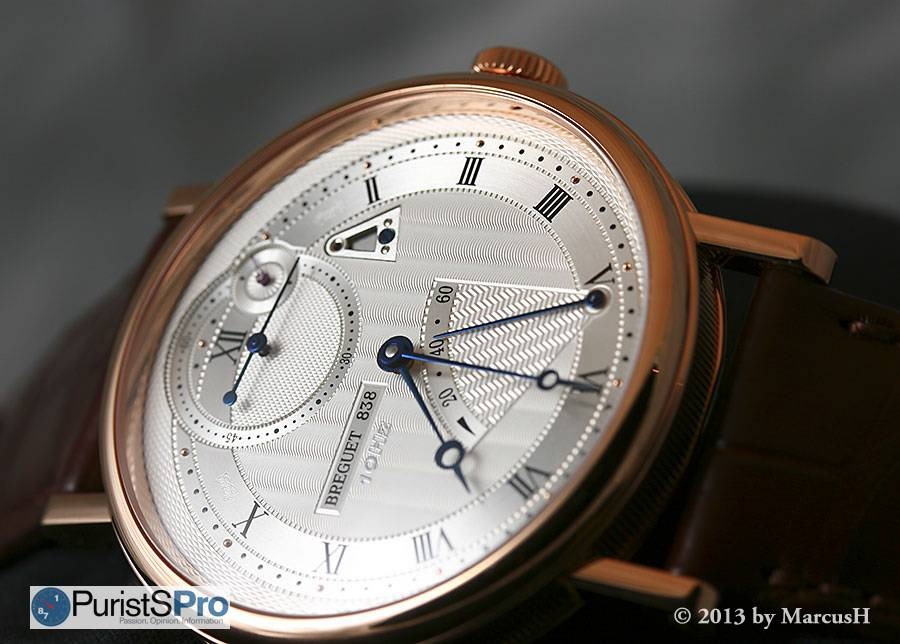
The Chronométrie is one of the major innovations of the past years, and time will show how much it will influence the future watchmaking technology. First, there is finally a worthy home for the marvelous 10 Hertz escapement, after the Type XXII had (and still has) some flaws in both design and useability. With a case diameter of 41mm, the Chronométrie is a highly elegant timepiece, with the Breguet-typical collection of slim heat-blued hands “pommes de Breguet” and various guilloche patterns on the silver dial. And, presumably the most important change from last year’s prototype: the formerly bright red “10 Hz” marking has lost its colour, only to be visible as a dial structure.
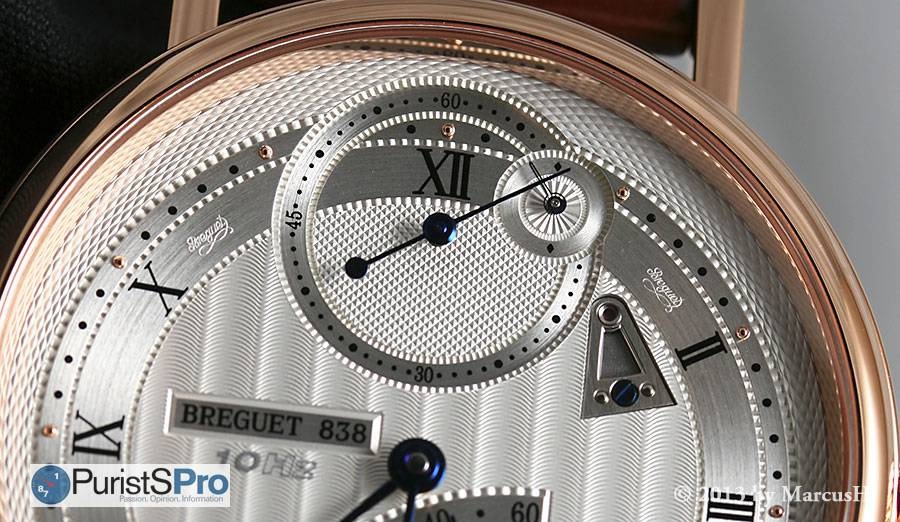
Besides the ultra-high alternation frequency, the other major innovation of the Chronométrie is of course its magnetic balance pivot: Resulting from the use of a pair of completely amagnetic silicium hairsprings and balance wheel, the possibility of using tiny, but strong magnets to keep a magnetic balance pivot in place became real. Normally, a balance is held in two bearings of jewels, which again are able to move a little bit in order to absorb the pivot’s axial movement after shocks. Breguet’s magnetic technology keeps the balance pivot held in position by a strong magnetic field between two magnets. Only the tips of the pivot are touching the magnets, to limit the axial air. If minor shocks, especially lateral ones, hit the balance, the magnetic field promptly forces the pivot back into position. To absorb major shocks, the traditional parechoc, or “Parachute” system originally invented by Breguet is engaged.
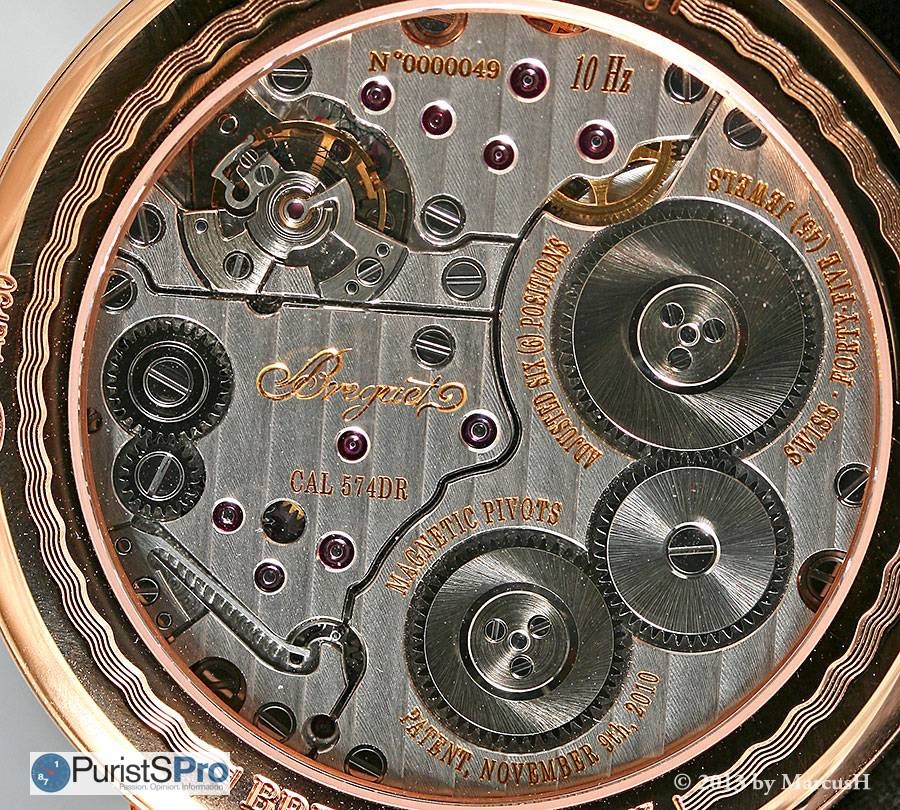
While the magnetic field also slows down the pivot, this effect is nonetheless much smaller than that of the conventional jewel-bearing and its friction, so the Chronométrie’s escapement is about twice as efficient as a conventional Swiss lever escapement. What fascinates me is the ability to produce micro-magnets with a field strength that can be exactly calculated and limited to tenths of a millimeter, so the rest of the watch movement would not be affected by it.
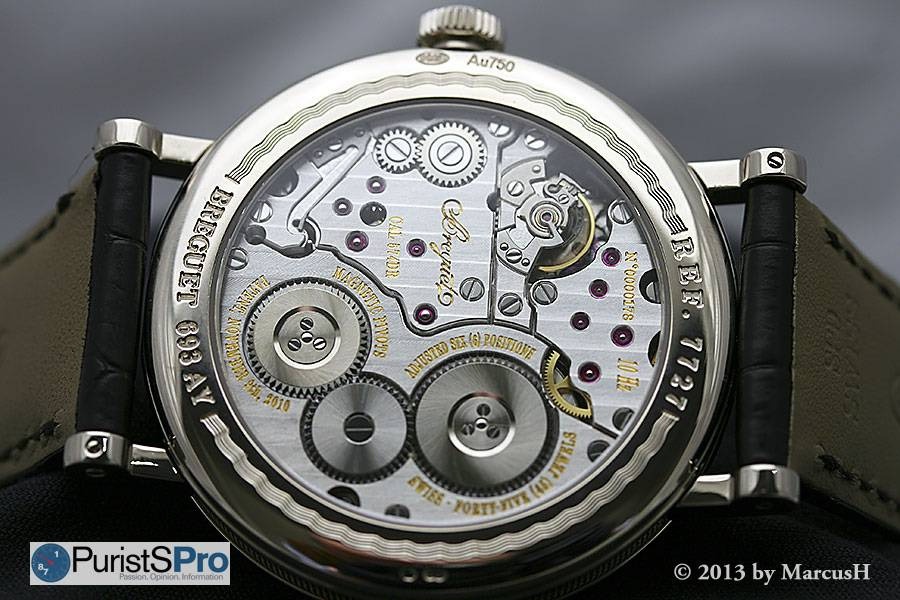
The dial of the Chronométrie 7727 features a small second at 12, with another tiny subdial showing the 10ths of a second, a power reserve indication at 6, and the top side of the Parachute system at 2. The hand-winding movement has a power reserve of 60 hours.
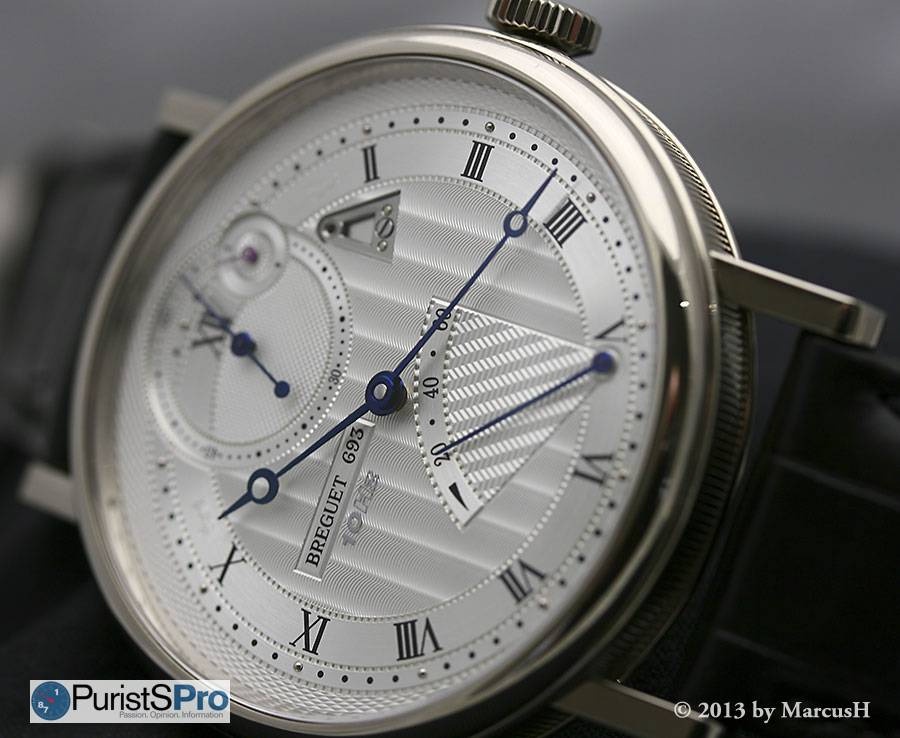
Another breathtaking novelty is the Classique La Musicale 7800: I mean this literally, since one should really hold one’s breath, in order to listen to the crystal-clear (though not very loud) tones of Bach’s “Badinerie”, from his h-minor orchestral suite. The central dial rotates when the music mechanism is engaged. Diameter is very large at 48mm, but this is necessary to accomodate the musical mechanism, and to get some sound volume from it. The case sides are adorned with the notes of the piece played.
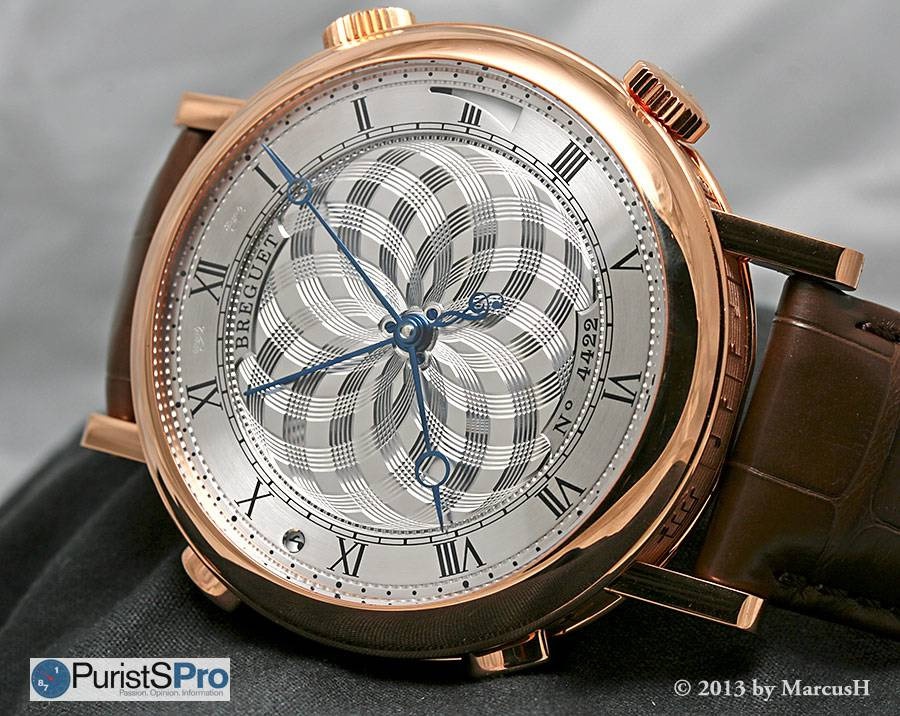
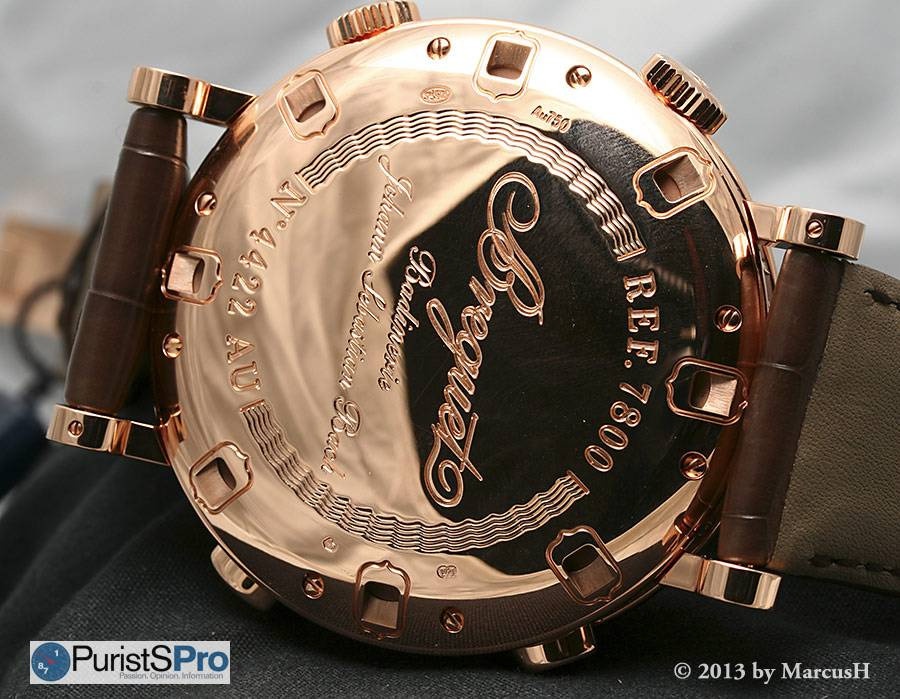
There are many beautiful chronographs on the market. However, barely one of them will beat the good looks of the new Classique Chronographe 5287, with the classical appearance of the handwinding cal. 533.3 movement. This Lémania-derived movement is in use since several years already, but still a great sight. The new watch has a larger case, with 42.5mm diameter, and a unique design of the small second at 9.
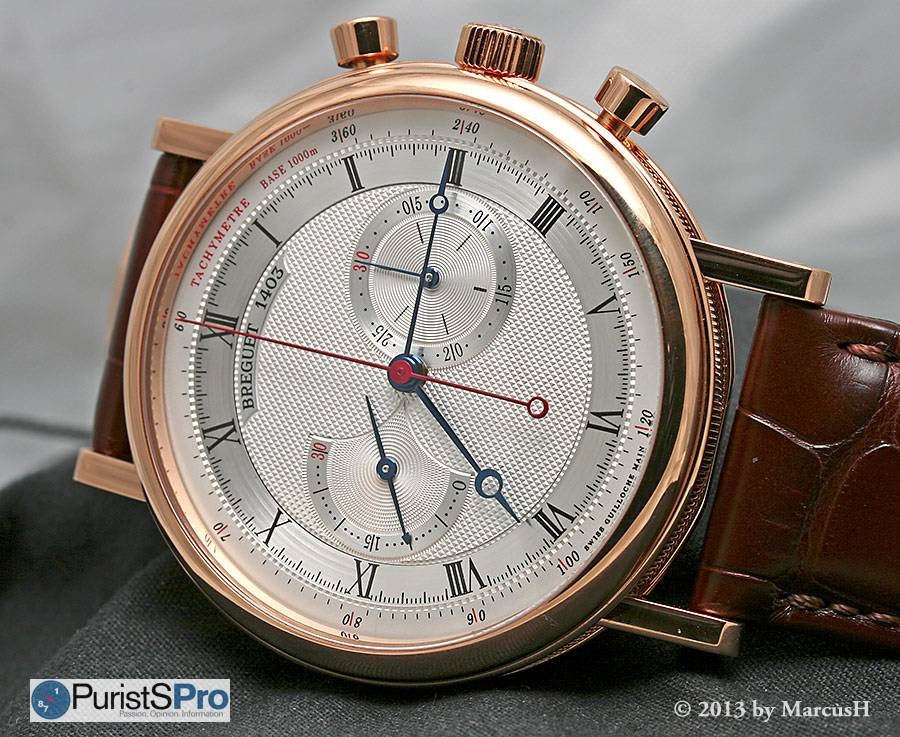
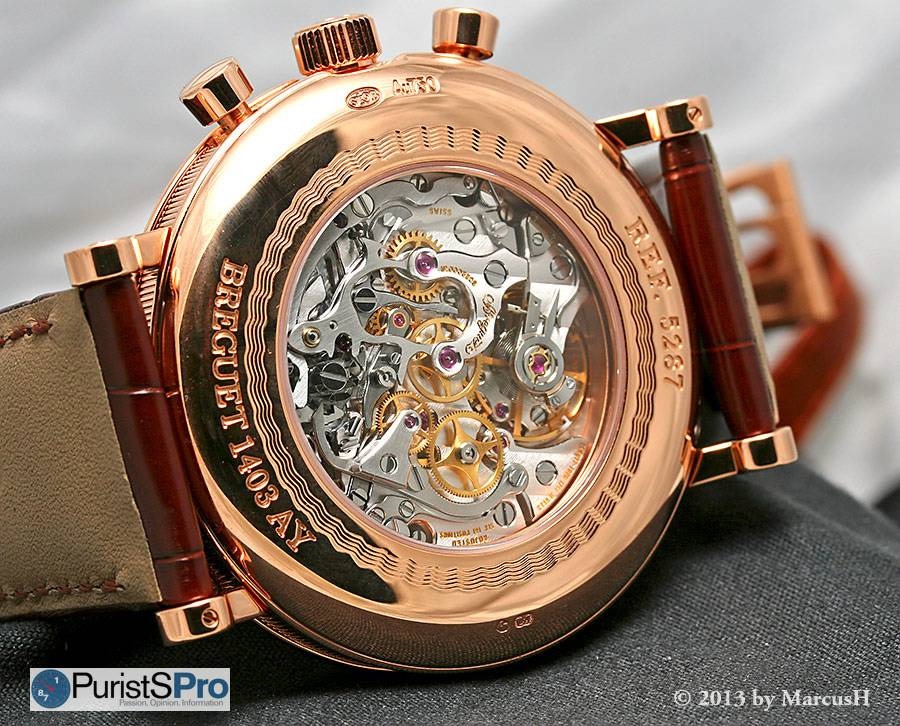
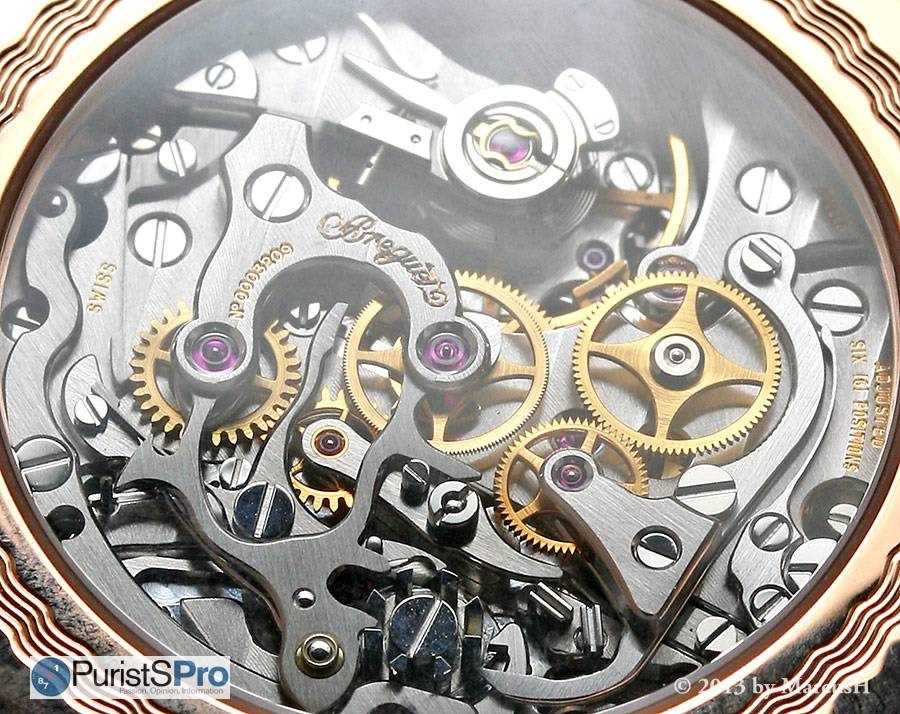
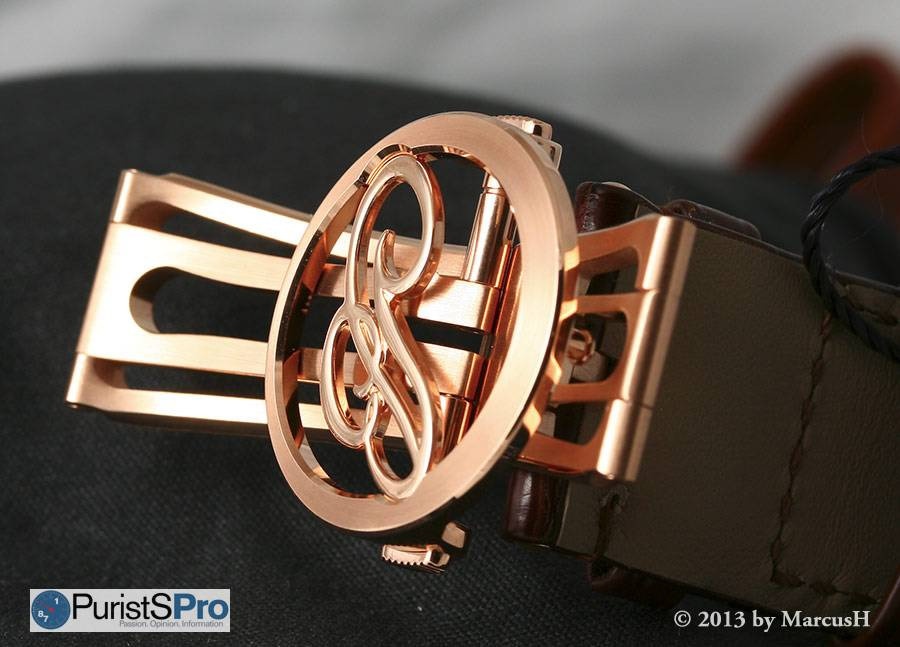
A small, but attractive innovation is the new folding clasp design.
The Classique Reserve de Marche 5277 is a typical Breguet, its mechanical uniqueness being the silicium hairspring and a special “high energy” mainspring barrel, permitting the watch to run for 96 hours. Diameter is at decent 38mm.
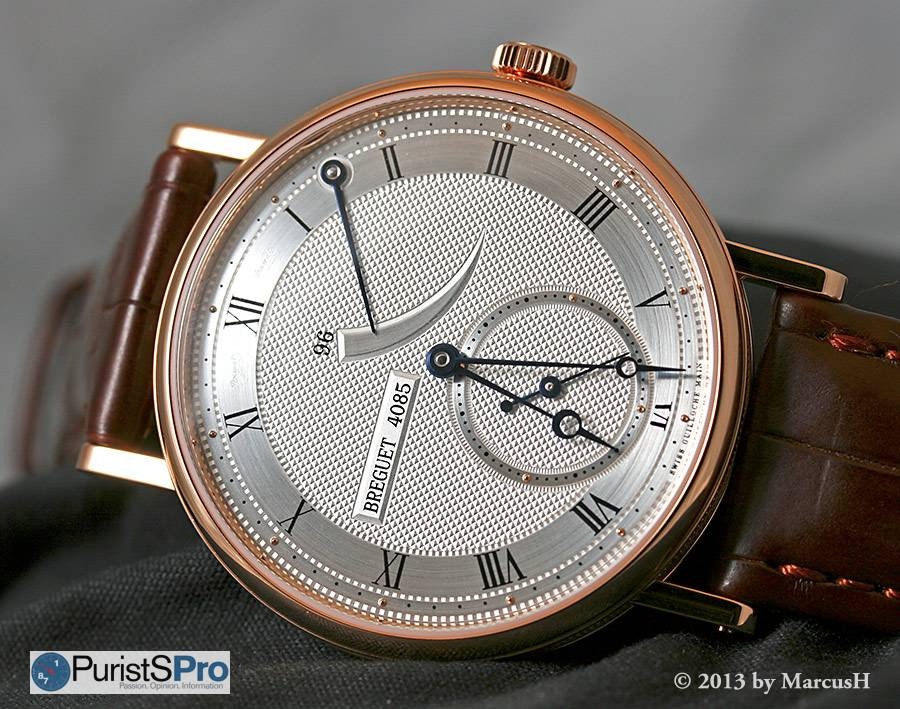
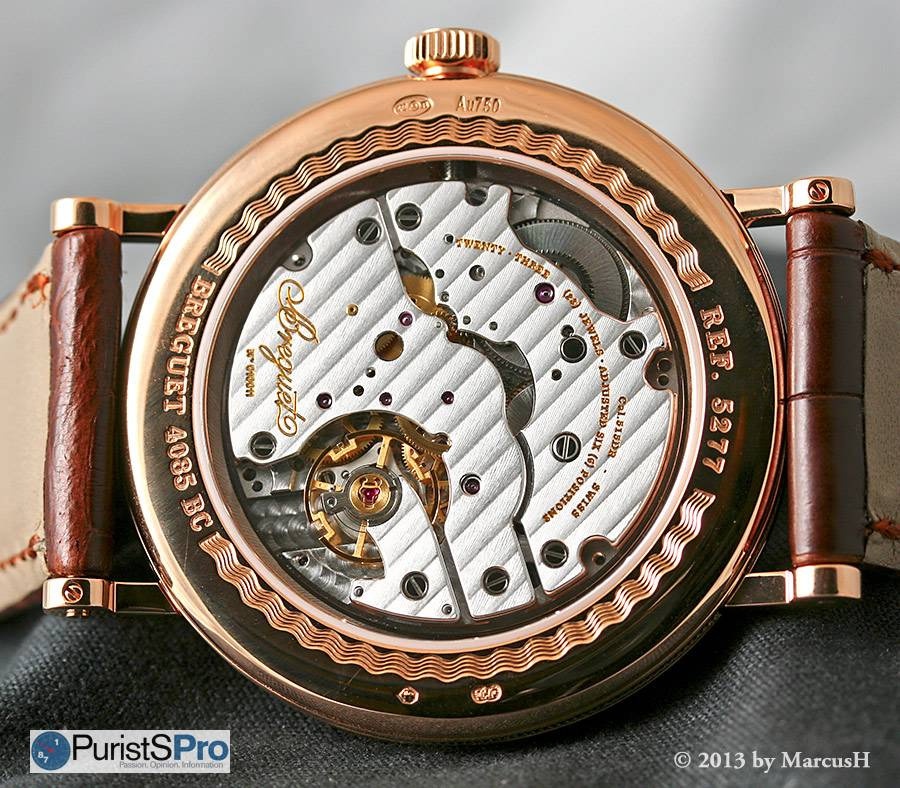
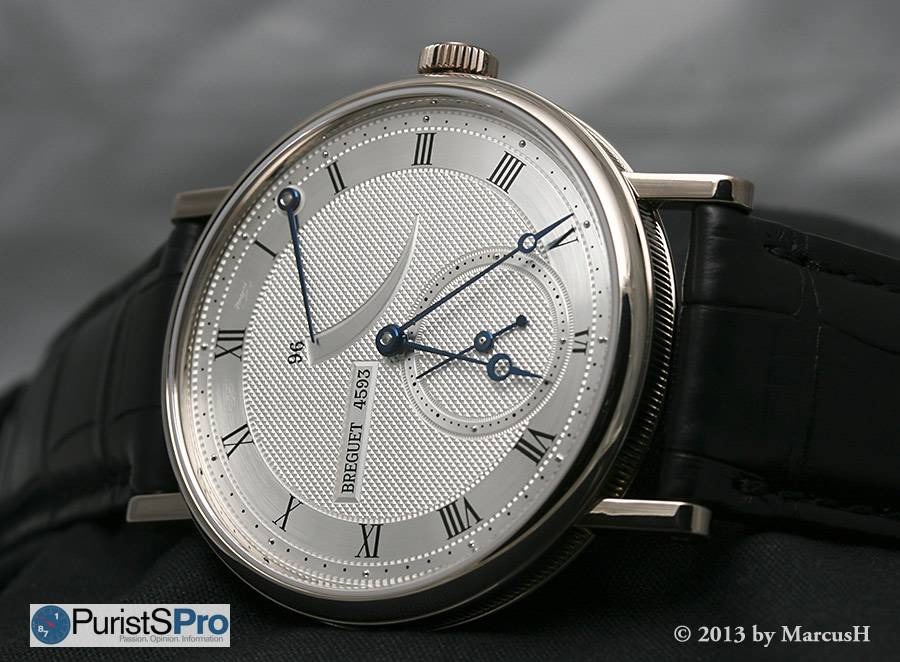
Talking-piece-quality should also be attributed to the new Classique Tourbillon extra-thin 5377 with automatic winding. If I recall correctly, the movement measures only 3mm in height, the whole watch is not thicker than 7mm. This is made possible by a rather unique peripheral rotor made from platinum and placed as a ring around the movement’s rim. While reminding of Carl F. Bucherer’s rotor system, the Breguet counterpart seems to lack the former’s sophisticated shock absorption system. However, the tourbillon itself is not designed as a sports watch, as neither the tourbillon cage features a specific shock protection.
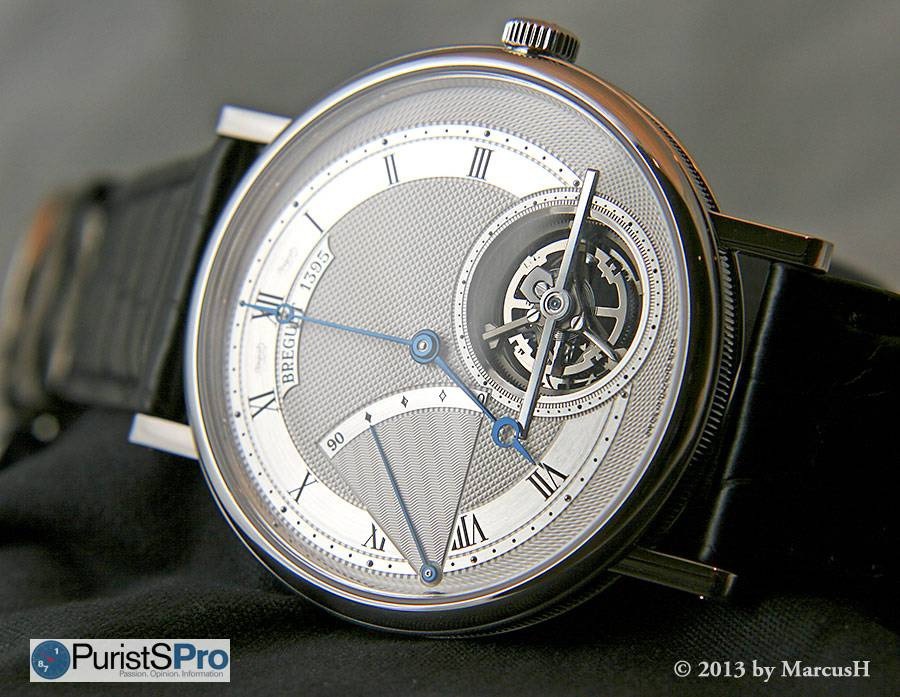
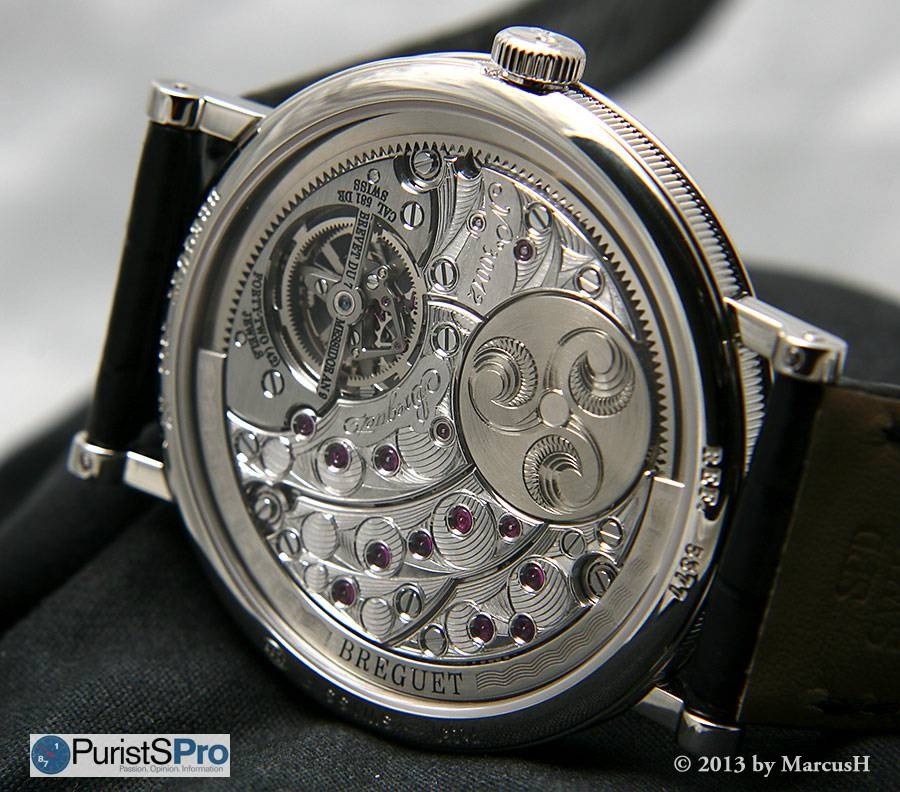
As a sidenote: The watch was running, but many scratches on the tourbillon cage, while the other movement parts were perfectly finished, suggested it to be a prototype. Only when editing my pictures, I noticed something weird about the balance ring, which I had not seen on the real watch, due to its fast movement: It is a simple stamped ring with fake weight screws, while the press picture shows the titanium balance ring with real golden screws. This is an example of how clever the Breguet engineers camouflage a working prototype!
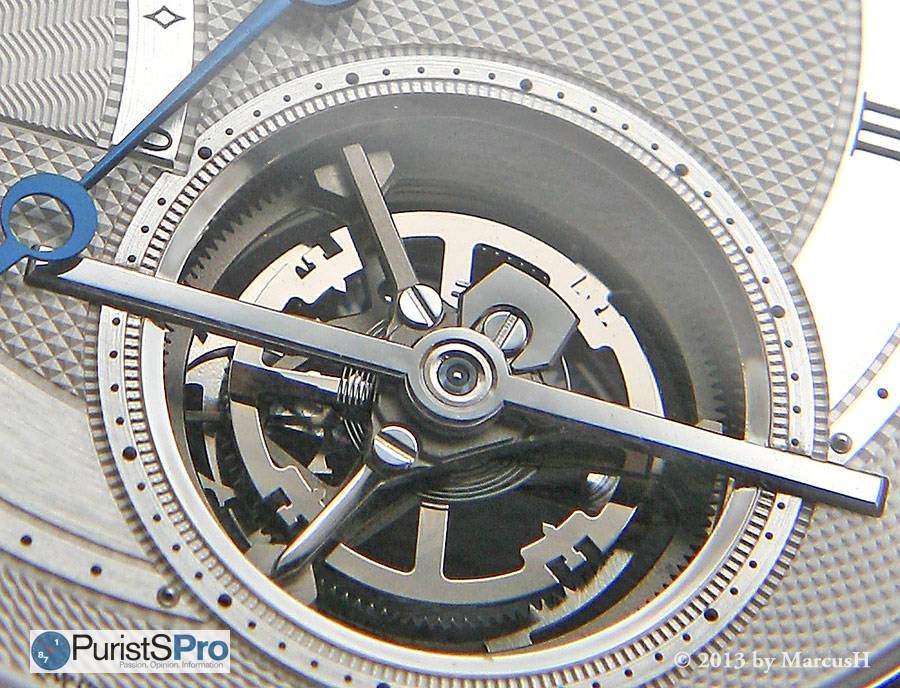
The "simulated" balance ring of the prototype ...
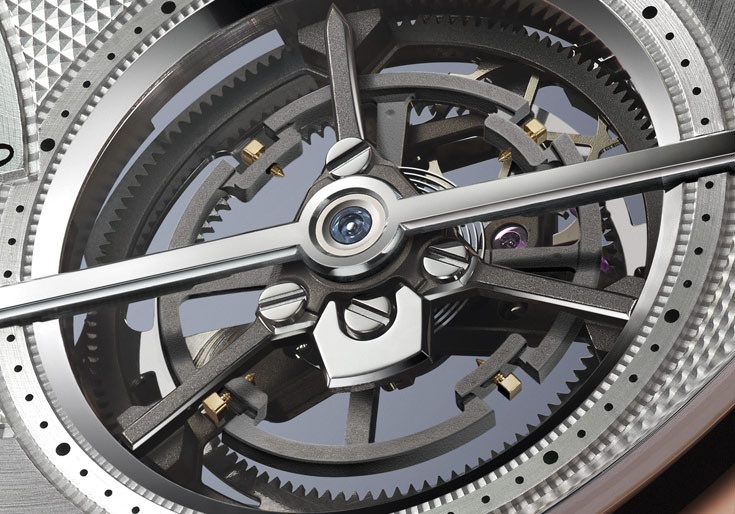
... and the production titanium balance ring with golden weight screws as shown on the press picture.
The Type XXII 10 Hertz chronograph is now offered in 18k pink gold with brown dial. I still consider this watch to be everything other but an epitome in useability. That the stop second hand rotates in 30 seconds, the whole watch is based on these 30 second ranges, makes it unnecessarily clumsy in use. Finally, that the second timezone wastes the space of two subdials indicating the same hour once on a 12 hours, then on a 24 hours subdial, instead of including a conventional 12 hours chronograph counter and a separate 24 hours GMT indication, only adds to this clumsiness.
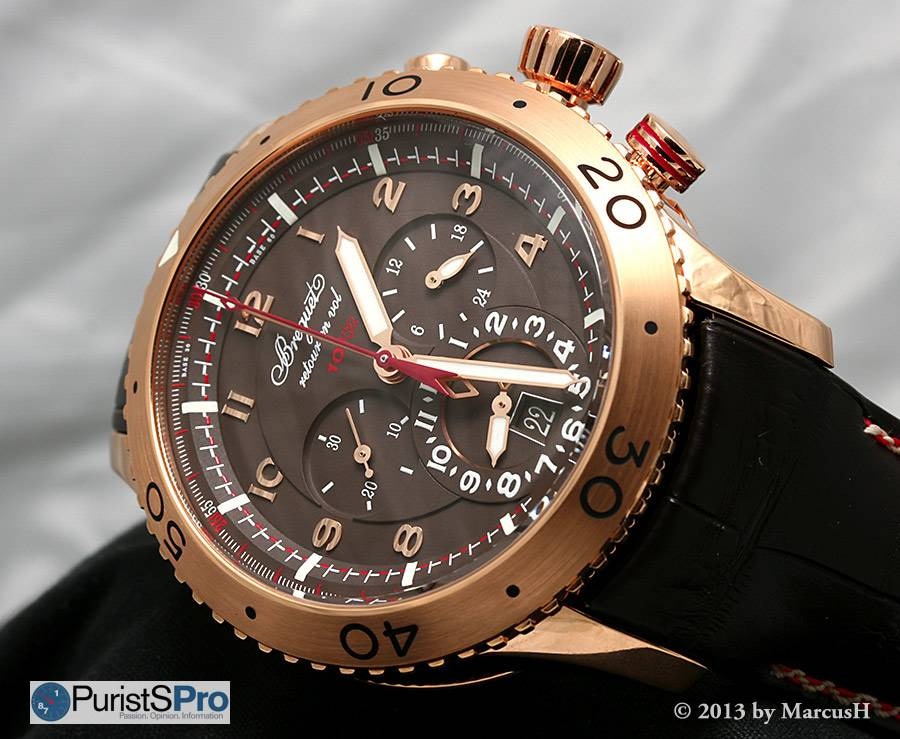
In my opinion the nicer chronograph is the new Marine Chronograph 8827 for ladies, available in stainless steel. With a diameter of 34.6mm and a dial from mother of pearl and a nice yin-yang-styled small second at 6, it will be very popular with the ladies, I am sure.
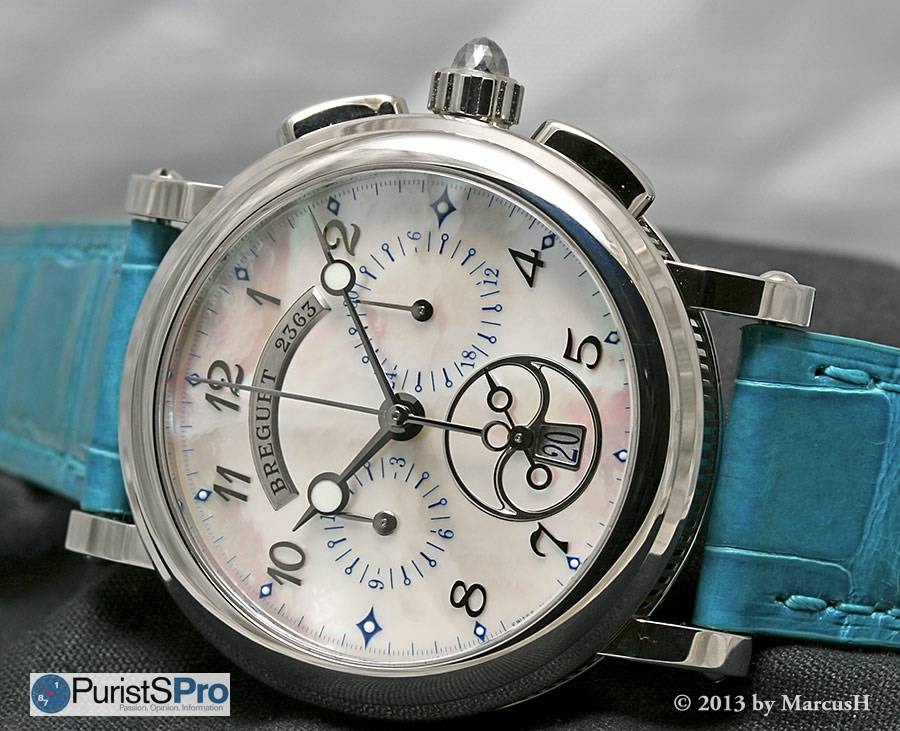
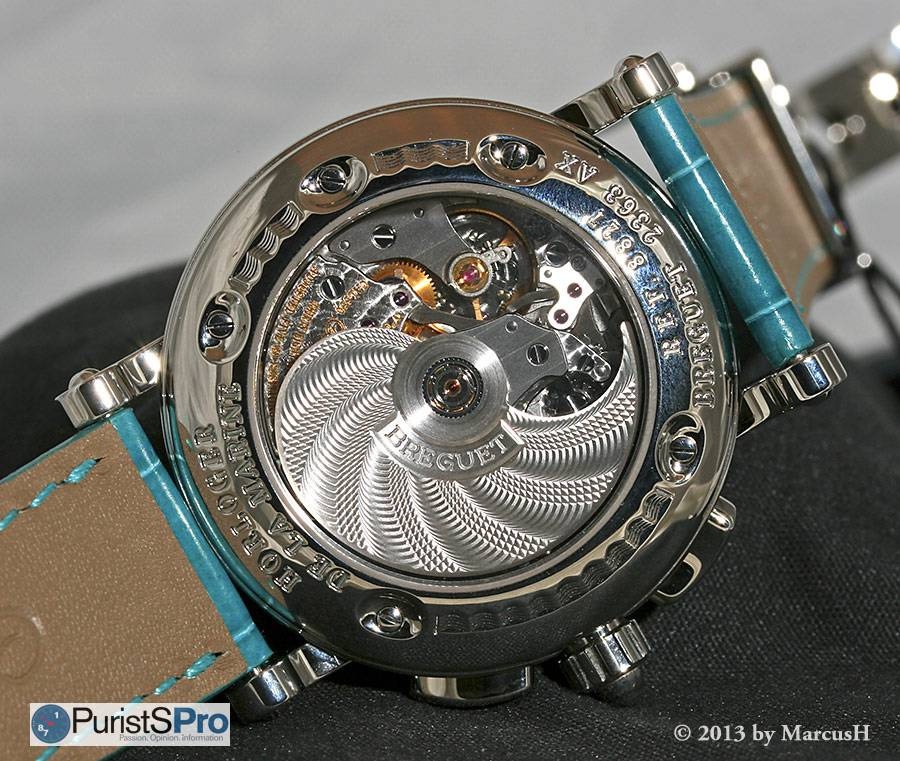
Highlight of the ladies collection, though, certainly is the Reine de Naples Day/Night 8998. The upper half of the dial is dominated by a large day-night indication, in which the balance serves as the sun. The ensemble of the disk with the sun (balance), titanium moon and clouds made from mother of pearl inlays rotates once every 24 hours. So the beating “heart” of the watch appears to be dancing with the moon around the pivot located at the 12 position of a bridge completing the hour dial. This is indeed a fascinating watch!
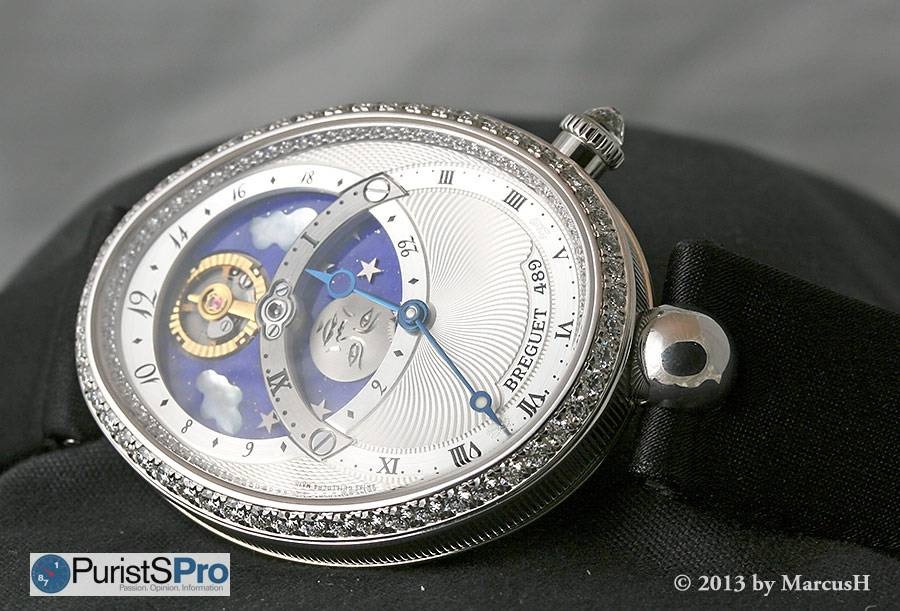
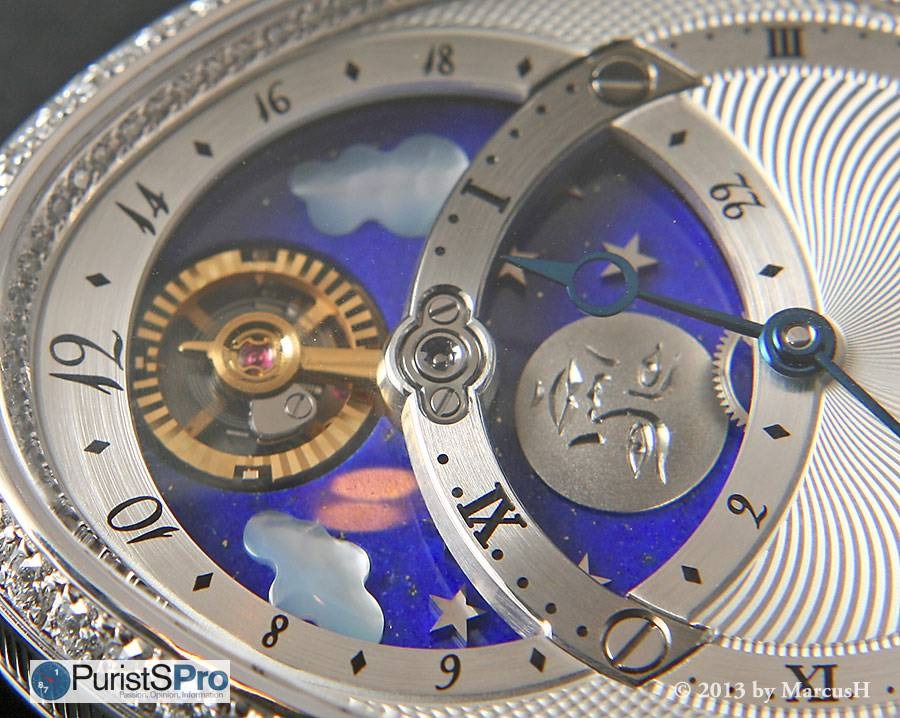
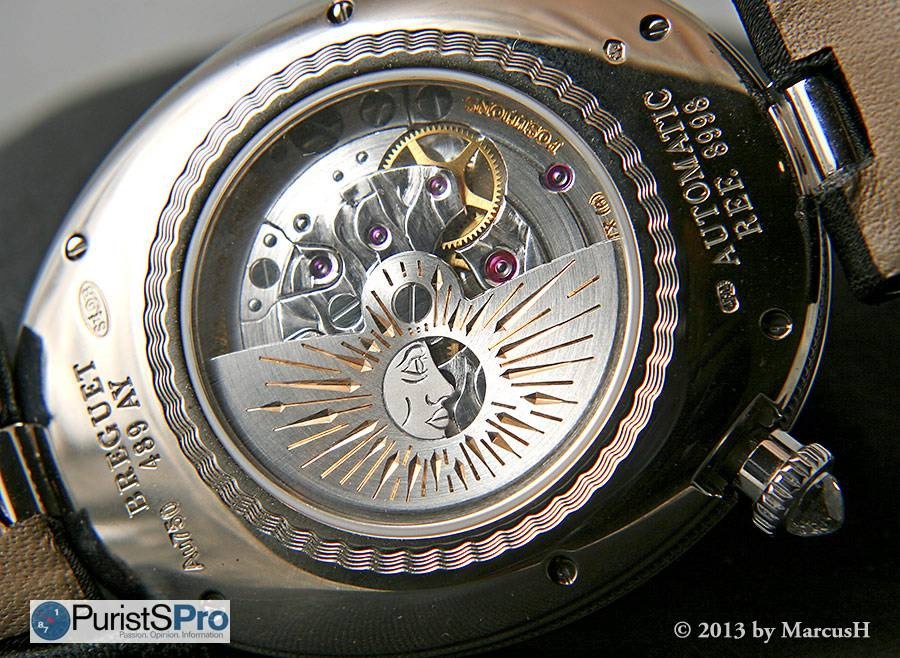
===
To leave comments, please go to Marcus' original report in Breguet forum, breguet.watchprosite.com
More posts:

Baselworld 2013: the Breguet report
Breguet at Baselworld 2013 presented by Marcus Hanke For me, Breguet was always not simply a mere watch production, but much more watchmaking with a magical touch. This year, I could feel this touch very clearly. Although having been presented last year a...
Classic Dial.
First of Thanks for sharing Nice Shot of Beautiful and Gorgeous Breguet watches Dial. I love It.